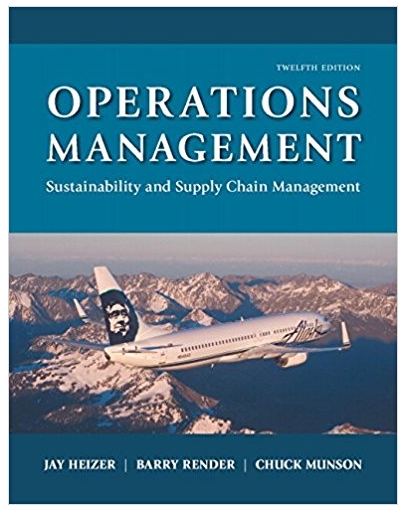Question
Transition to Leadership My name is Michael Collins. When I was named Southwest Regional Manager of Creighton Auto Parts, a major parts sales and service
Transition to Leadership
My name is Michael Collins. When I was named Southwest Regional Manager of Creighton Auto Parts, a major parts sales and service corporation, I saw the transition period before and immediately following my appointment as an exciting new opportunity. With a degree in automotive engineering and several years experience in parts manufacturing (design and plant management), I came to the new position with strong industry connections and a keen eye for trends and product innovation.
During the initial stages of the transition, I met with the outgoing regional manager, receiving his input about ongoing business issues, how current services tallied with the corporations short- and long-term goals, and what he saw as the strengths and weaknesses of the various stores and personnel within the region. While some of these meetings took place at his office, I wanted to avoid the appearance of depending on the old man for guidance, so I scheduled most of our meetings off-site to provide more opportunities for frank discussion covering procedures, products and services, and individual stakeholders from employees and board members to suppliers and customers.
In addition, I spent a great deal of time making my own assessments. I knew my company honeymoon period would be limited. My vision and my implementation program had to be clear with well-defined strategies. As a first step, I sent a lengthy e-mail message to all key players on my new leadership team both as introduction and as a prelude to establishing my vision and transition program.
I traveled around the region meeting with the store managers on my regional team, as well as holding informal meetings with front-line employees. In so doing, I was surprised to tap into the rumor mill and find individuals who were eager to talk openly about their goals, ideas, opinions, and complaints. My questions to front-line workers, in particular, had both positive and negative aspects. I questioned them about their length of service, what they liked most about the company, what areas they thought could be improved, how they rated the culturethings like that. I discovered that for most of them, this was more than just a job. Many had worked for the company for a number of years and had a great deal of pride in the company, as well as a deep sense of responsibility toward their customers.
However, I found this portion of my on-site visits the most intrusive on my time, and in many cases I regretted the amount of time I spent listening to workers. I wondered if the advance warning of my visit allowed too much time for people to prepare their answers. I wondered how many were genuine in their responses and how many were just trying to hold on to their jobs. Worse, I found myself hostage to those who wanted to rant on and on about workplace issues, their training, their bosses, even their customers. I talked to a few customers and didnt get much from that either. As I proceeded through the on-site visits, I found myself growing impatient, increasingly checking my watch to see how soon I should leave for the next appointment on a packed schedule. I admit I expected more from this portion of the transition than I received. However, once I committed to this, I felt obligated to see it through.
More rewarding was the time spent with the marketing staff exploring customer satisfaction levels. In focusing on customers, I zeroed in on three research areas: customer complaints, area demographics, and the compounding customerthose return customers who generate additional sales among their friends and family. Why do customers come? What makes them return? What are their personal hot buttonsneeds or breaking points in dealing with service industries? Our market research showed large segments of our population in four areas: under 30, over 60, Hispanics, and women. We also saw an increasing number of unemployed and under-employed do-it-yourself customers trying to keep the family vehicle going just a little longer. I personally love analyzing market data.
My question for regional service, sales, and marketing was how are we reaching and retaining these segments of the population? Do advertising, Web sites, direct mailing, coupon campaigns, and other marketing strategies match these demographics? For example, are we providing and training Spanish-language sales and service experts and consumer information? With large segments of young people, senior citizens, the unemployed, and single moms, wouldnt these large segments of the population offer fabulous compounding opportunities with focused marketing and price breaks?
As I take the reins, I am excited about the marketing challenges and opportunities ahead. I am an idea guy, a hands-on manager whose ideal is the Renaissance man capable of doing many things very well. I like to surround myself with similar kinds of people. I generate ideas and expect follow-up and accountability. The leadership model I embrace sets the bar high for me and for everyone who works for me. I look forward to injecting a new vision and new standards of service throughout the region.
QUESTIONS
1. What do you see as Michael Collinss leadership traits? Which of these traits do you consider a strength? A weakness? Explain.
2. What do you think of Michael Collinss approach to leading the region? How would you characterize his people-oriented versus task-oriented style? Why?
3. How might an understanding of individualized leadership be useful to Collins with respect to his relationship with marketing versus store personnel?
Step by Step Solution
There are 3 Steps involved in it
Step: 1

Get Instant Access to Expert-Tailored Solutions
See step-by-step solutions with expert insights and AI powered tools for academic success
Step: 2

Step: 3

Ace Your Homework with AI
Get the answers you need in no time with our AI-driven, step-by-step assistance
Get Started


